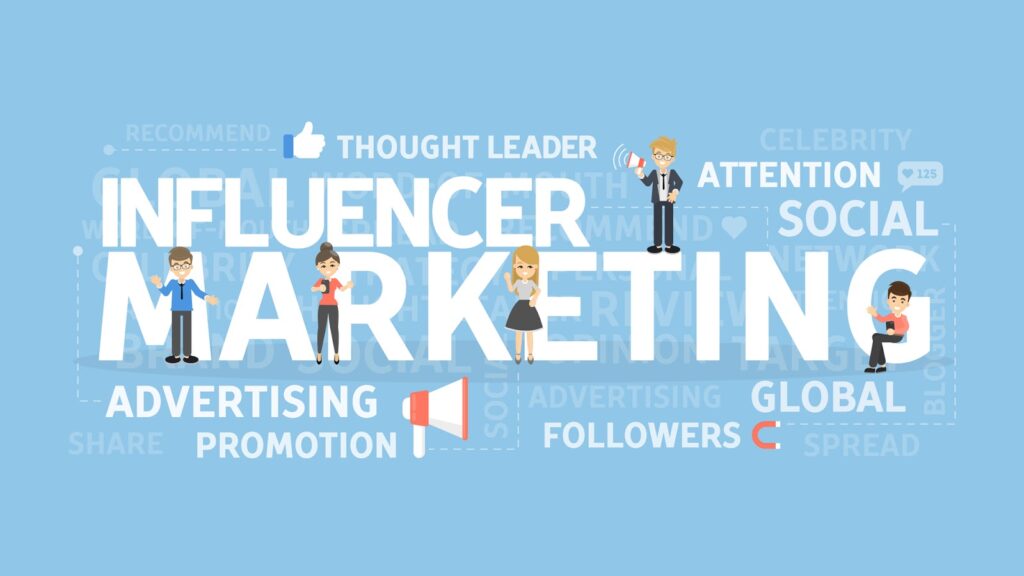Table of Contents

In the vibrant world of tech startups, the power of traditional marketing often falls short. Why tread the beaten path when there’s a whole universe of creative, bold and unconventional strategies waiting to be explored? From embracing humor and building innovative referral programs to leveraging the power of new platforms, discover a wide array of marketing experiments tailored for the audacious and the inventive. Engaging influencers, devising contagious contests or speaking the language of Gen Z – it’s all about injecting a dose of daring innovation into your startup marketing. The next big thing might just be a thought away.
Embracing the Unconventional: Bold Experiments in Startup Marketing
Many tech startups are pioneers in their fields, yet their marketing strategies often lack the same boldness. Groundbreaking products deserve equally inventive promotion. Why not channel the audacious spirit of companies like Tesla or Red Bull by brainstorming 10 out-of-the-box marketing ideas? Even if they seem far-fetched, this creative process can ignite smaller, feasible experiments worth pursuing
Imagine a startup creating art exhibits inspired by their product vision, or hosting pop-up dining events that reflect their brand ethos. This type of ambient marketing crafts immersive experiences that leave a lasting impression. While they may be unconventional, these interactive moments often spread more effectively than traditional advertisements.
Of course, any radical idea needs thorough evaluation before it can be put into action. Start by assessing potential costs, logistical needs, and legal considerations to determine feasibility. Then, conduct small, targeted tests, tracking meaningful metrics such as app downloads, affiliate signups, or preorder conversions. Like any experiment, anticipate some failures, but use these experiences to inform smarter future tests.
By combining out-of-the-box thinking with strategic testing, startups can stumble upon innovative promotions that drive growth cost-effectively. The next big thing may be just one marketing experiment away. What daring ideas might your startup explore?


Injecting Humor into Guerrilla Marketing
For startups vying for attention in a saturated market, standing out is no joke. Yet, integrating humor and surprise into guerrilla marketing strategies can be a novel, cost-effective method to create buzz. When executed with care, infusing light-heartedness into unexpected public scenarios sparks curiosity and encourages audiences to engage.
What kind of humor does your target demographic resonate with? Younger groups tend to respond better to self-deprecating or silly content, while older audiences appreciate subtle wit. Understand your niche and experiment with various comedic styles to see what resonates. Aim for laughter, not groans.
A notable instance is the cloud storage company Backblaze, which created faux missing pet posters to promote data backup. The headline “Lost: 2GB of Cute Kitten Photos” drew attention by merging the quirky visual of the flyer with a message about the product’s benefits.
Where should you deploy your guerrilla tactics? Identify high-traffic areas like bustling public transport stations where captive audiences have time to engage. Main pedestrian zones and event spaces are also prime targets. Street teams can distribute clever giveaways that spark conversations about your brand.

However, consider the context before disrupting people’s day. Strive to delight rather than irritate. Look for spaces where audiences are more open to a break from their routine.
Timing is also key when planning humorous guerrilla campaigns. Launching campaigns tied to related cultural events often boosts traction. Avoid times when audiences are less likely to be in a cheerful mindset.
While humor can initially pique interest, it’s crucial to link back to your product. Find ways to incorporate strong calls to action within experiences, guiding audiences to engage further. Shortened URLs on physical elements can help bridge the gap in digital spaces.
Adopting a testing mindset is crucial. Be ready to adjust strategies based on reactions. For instance, the software company Freshdesk adjusted their street team outreach based on interactions. Observing what giveaway items and messages elicited positive responses allowed them to refine their approach over time.
While early-stage budgets may be tight, understand that creative guerrilla marketing done right offers significant impact for minimal cost. Value creativity over expenditure. Focus on one or two tested concepts thoughtfully rather than uncoordinated blasts across multiple platforms.
The goal is to create shareable, interactive moments that allow your product to shine. Humor simply helps smooth the path for audiences to become receptive to learning more.
Leverage Your Fans: Implementing Referral Marketing Programs
Word-of-mouth marketing is a gold mine for startups aiming to boost awareness and gain customers in a cost-effective manner. Referral programs are a clever way to encourage satisfied customers to spread the word to their network. This section will shed light on innovative ways tech companies can structure referral programs to broaden their reach.
The initial step is to offer enticing rewards that inspire customers to share your product. Think about reward tiers based on the number of successful referrals. Offer perks like discounts on future purchases, account upgrades, early access to new features, or entries into prize drawings. However, remember that monetary rewards should play second fiddle to nurturing genuine brand advocates.

Make the referral process a breeze by ensuring sharing is intuitive across channels. Provide custom referral links and create shareable content like videos that make it easy for advocates. Embed referral options directly into your product such as alerts prompting users to invite friends to join. Minimize friction as much as possible.
Plant the seeds of the program by identifying your most enthusiastic power users. Reach out offering special perks in exchange for providing feedback and initiating referrals. Use their influence to encourage early sharing. As momentum builds, focus on delighting these VIP users as their experience influences referral volume.
Regularly highlight and promote the program. Use email, social media and in-product messaging to raise awareness of referral perks. Showcase advocates by sharing their stories and experiences. Share data on program growth and successes to maintain enthusiasm. Consider referral contests and bonuses during slow periods to reignite interest.
The secret is to design referral programs that feel like a natural extension of your product experience, not an intrusive add-on. When brand affinity is strong, customers eagerly share without incentives. Integrate programs seamlessly while avoiding overly aggressive tactics. Choose authenticity over hard-sell promotions.
Assess referral program success across dimensions – not just raw conversion rate but product usage, retention and customer satisfaction over time. Thoroughly evaluate whether referred users demonstrate higher lifetime value versus other acquisition channels. If so, justify allocating additional marketing budget to expand referral initiatives.
In conclusion, well-crafted referral programs effectively transform customers into brand champions. They represent one of the most credible forms of marketing available to startups. Approach these programs thoughtfully and avoid overly-transactional tactics. When you delight customers, referral follows.
Unleash Your Creativity: Contests, Challenges, and Giveaways
Contests, challenges, and giveaways that cleverly engage your audience can create a significant buzz around your startup. More importantly, they forge meaningful connections with potential customers.
Instead of trying to revolutionize your marketing, concentrate on crafting promotions that resonate with your brand identity. For instance, an AI startup could sponsor a contest asking participants to imagine practical everyday uses of the technology. Inject some fun into it by offering small prizes for the most thoughtful, humorous, or unique submissions.
Another idea is to challenge customers to showcase their creative use of your product. Encourage them to submit videos, photos, or testimonials of their experience. This not only generates user-driven marketing content but also provides valuable insights into how your product integrates into customers’ lives. Design the challenge to encourage maximum participation, such as having different categories for submissions or offering chances to win prizes.
Product giveaways can also pique interest while introducing new users to your product. Distribute free trial samples at industry events or offer limited-time discounts to the first 50 customers. Be strategic with giveaway targets, quantities, and eligibility to generate excitement.

Ensure your contests and challenges prioritize skill or creativity over pure luck. For example, a startup creating educational games could invite children to submit drawings of what they learned or stories incorporating knowledge from the games. Judges would then select winners based on effort and integration of the material, showcasing your product’s capabilities more meaningfully than a random drawing.
As you design promotions, consider using contest tools that simplify administration and legal compliance. RaffleCopter, Wishpond, ViralSweep, and EasyPromos offer templates while managing promotion rules, winner selection, and delivery. Read their usage guidance carefully to understand contest best practices.
While contests can attract new users, be careful not to let promotions compromise your brand identity or product quality. Avoid gimmicky contests that do little to showcase your product’s core utility. The goal is to create genuine engagement rather than quick hype. Promotions should highlight what makes your startup and product special in people’s lives.
With thoughtfulness and restraint, contests, challenges, and giveaways allow startups to stand out in creative ways. Instead of trying to revolutionize your marketing approach, focus on building community and delight around your product. Promotions are a launchpad for meaningful connections with your customers, not just short-term attention.
Engaging in Meaningful Dialogues with Appropriate Influencers
For tech startups, influencers can serve as potent platforms to connect with their target demographics. However, the key lies in pinpointing the right influencers and designing mutually advantageous collaborations through strategic planning.
Instead of chasing influencers with a massive follower base, concentrate on those with engaged audiences that resonate with your specific niche. The crux is not the number of followers they have, but the genuine connection their followers have with their content and endorsements.
Begin by asking, who is already engaging my ideal customers in meaningful dialogues? Invest time in researching micro-influencers, industry connoisseurs, and advocates with smaller, yet loyal followings. While mega-influencers may have millions of followers, micro-influencers often generate higher engagement and conversion rates. They build communities with niche audiences that truly trust their domain knowledge and product suggestions.
For instance, if your product is AI-powered software for photographers, some suitable influencers could be: – Photographers renowned for creatively utilizing AI-powered tools – Bloggers critiquing the latest advancements in post-processing software – YouTube videographers comparing AI programs for photographers
Instead of targeting all photographers, you could establish a stronger connection with potential customers by engaging with micro-influencers who are already discussing such AI tools.
Upon identifying relevant influencers, kickstart your outreach by clearly articulating the potential mutual benefits. Make it easy for influencers to understand why a partnership would serve both their audience’s interests and your brand’s mission.
An initial email could underscore: – The problem your product solves for their niche audience – How your brand’s mission aligns with their advocacy – The incentive or support you can offer them and their community

For instance, propose to sponsor influencer giveaways of your product or feature their work on your company’s blog. Consider giving them exclusive access to pre-release product versions to stimulate original content creation. Brainstorm innovative collaborations that provide ongoing value.
The most successful influencer partnerships view the relationship as a long-term commitment. Keep the lines of communication open after the initial collaboration. Regularly check in to gather feedback, inspire future content ideas, and reaffirm your dedication to that community.
Capitalizing on mutually beneficial influencer partnerships involves identifying the right influencers, tailoring your outreach, incentivizing win-win situations, and nurturing relationships over time. Focus on quality over quantity by prioritizing engagement rates over follower counts. Seek out micro-influencers who are already engaging in meaningful dialogues with your niche target market. Then, devise creative, ongoing collaborations that provide value for both that community and your brand.
Engaging Gen Z: Harnessing the Power of New Platforms
Gen Z, those born between 1997 and 2012, presents a tantalizing prospect for startups looking to establish a dedicated user base. These digital natives value authenticity, creativity, and visually engaging content. To effectively engage this demographic, startups need to be present on the platforms where Gen Z already hangs out, such as TikTok and Snapchat.
By establishing a presence and experimenting on these ever-evolving platforms, startups can organically cultivate an audience of enthusiastic early adopters. While big brands invest heavily in wide-reaching social campaigns, agile startups that are open to new platforms can forge deeper connections through creativity and niche communities.
The secret lies in participation, not domination. Steer clear of overt sales pitches or insincere attempts at going viral. Instead, focus on entertaining or problem-solving, rather than product promotion. Authentic engagement with Gen Z users will naturally foster loyalty and brand affinity.
TikTok, in particular, has proven to be a potent tool for startups aiming to capture Gen Z’s attention. Through its addictive feed of short videos, the app algorithmically presents content it predicts individual users will enjoy. This means even niche startups can find their tribes. By posting original, humorous, helpful, or beautiful videos, small brands can generate awareness and interest on a shoestring budget.
Some startups use TikTok for playful brand-building, like the sustainable sneaker startup Nothing New, which posts unboxings and designer studio tours. Others, like the financial app Braid, use it to solve problems by answering money questions from young users. Occasional behind-the-scenes peeks or addressing real user questions can foster authenticity and connection.
While TikTok offers entertainment and solutions, Snapchat harnesses the power of creativity and ephemerality through its disappearing photo and video “Stories.” The transient nature of Snaps encourages casual content, ideal for startups looking to carve out unique brand voices.
For instance, the direct-to-consumer healthcare startup Ro often features genuine conversations between doctors and patients on its Snapchat profile. The mission-driven startup Tom’s sometimes posts fun videos of employees dancing in the brand’s iconic shoes. By showcasing real employees either having fun or passionately discussing products, these brands resonate with Gen Z audiences who value transparency.

Startups wary of investing scarce resources into new platforms should remember that early adopters often become a brand’s most fervent advocates. By taking a risk on new apps popular with teens and young adults, startups can organically grow loyal user bases faster than anticipated. Staying flexible and open to engaging audiences on their preferred platforms can often yield significant returns from even modest investments.
Instead of fearing the unknown, embrace curiosity and a willingness to experiment. TikTok, Snapchat, and whatever platforms emerge next can offer startups seeking to engage young people the perfect venues to do so creatively, memorably, and authentically. The key is to participate rather than dominate, entertain rather than sell, and solve problems rather than promote. Consistently doing this over time, emerging platforms can provide startups a pathway to success among Gen Z digital natives.
Embracing unconventional marketing strategies can provide startups with a competitive edge. From bold experiments, humorous guerrilla tactics, referral programs, creative contests, meaningful influencer collaborations to diving into new platforms like TikTok and Snapchat for Gen Z — these methods can lead startups to innovative promotions that drive growth both cost-effectively and creatively.



